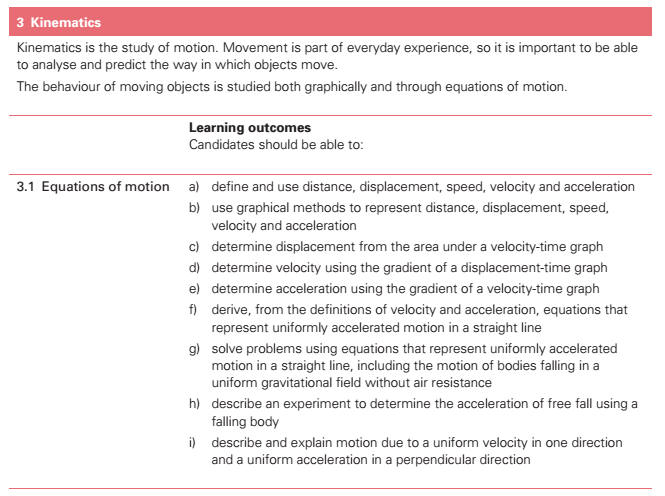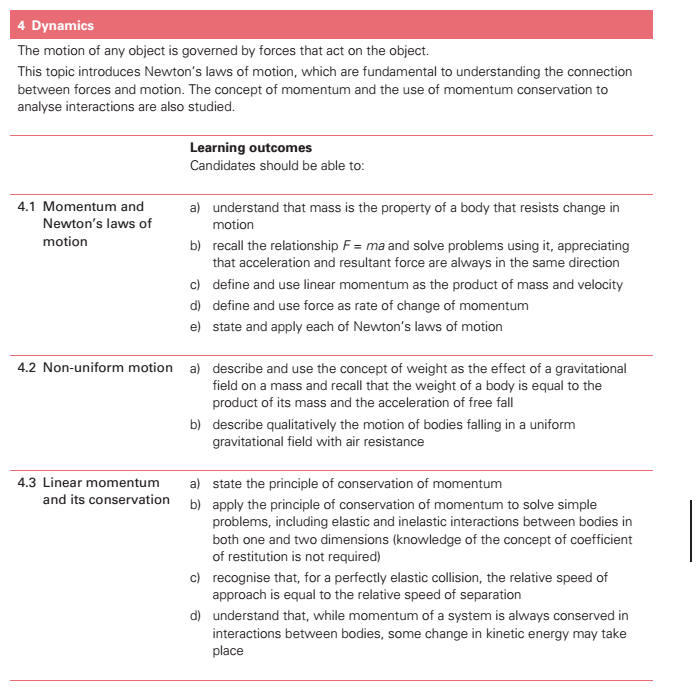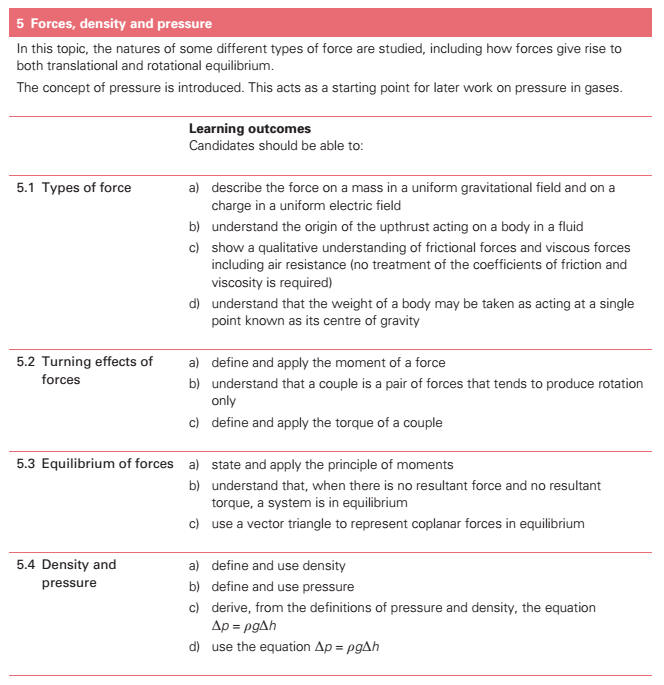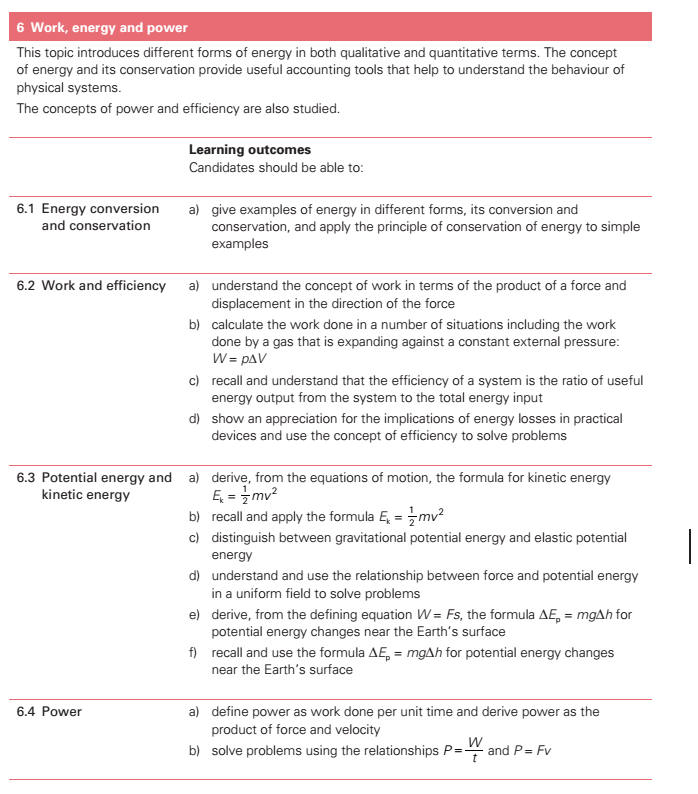
|
3.
Kinematics |
|
|
(a) define displacement, speed, velocity and acceleration[]. * (b) use graphical methods to represent displacement, speed,
velocity and acceleration[]. * (c) find displacement[][] from the area under a velocity-time
graph. * (d) use the slope of a displacement-time graph to find the
velocity. * (e) use the slope of a velocity-time graph to find the
acceleration. (f) derive, from the definitions of velocity and acceleration, equations
which represent uniformly accelerated motion in a straight
line. * (g) solve problems using equations which represent
uniformly accelerated motion in a straight line, including the motion of bodies falling
in a uniform gravitational field without air resistance. (h) recall that the weight of a body is equal to the product of its mass and
the acceleration[] of free fall. * (i) describe an experiment to determine the acceleration[] of
free fall using a falling body. (j) describe qualitatively the motion of bodies falling in a uniform
gravitational field with air resistance. (k) describe and explain motion due to a uniform velocity in one direction
and a uniform acceleration[] in a perpendicular direction. |
|
|
|
|
|
(a) state each of Newtons laws of motion. (b) show an understanding that mass is the property of a body which resists
change in motion. (c) describe and use the concept of weight as the effect of a gravitational
field on a mass. (d) define linear momentum as the product of mass and velocity. (e) define force as rate of change of momentum. * (f) recall and solve problems using the relationship F = ma, appreciating that acceleration[] and force are always in the same direction. (g) state the principle of conservation of momentum. * (h) apply the principle of conservation of momentum[] to
solve simple problems including elastic and inelastic interactions between two bodies
in one dimension. (Knowledge of the concept of coefficient of restitution
is not required.) * (i) recognise that, for a perfectly elastic collision, the
relative speed of approach is equal to the relative speed of separation. * (j) show an understanding that, whilst momentum[] of a system is always conserved in interactions between bodies, some change in kinetic energy[] usually takes place. |
|
|
5. Forces, density and pressure |
|
|
(a) describe the forces on mass and charge in uniform gravitational and
electric fields[], as appropriate. (b) show an understanding of the origin of the upthrust[] acting on a body in a
fluid. (c) show a qualitative understanding of frictional forces and viscous forces
including air resistance. (No treatment of the coefficients
of friction[] and viscosity[] is required.) (d) use a vector triangle to represent forces in equilibrium[]. (e) show an understanding that the weight of a body may be taken as acting at
a single point known as its centre of gravity[]. (f) show an understanding that a couple[] is a pair of forces which tends to
produce rotation only. (g) define and apply the moment of a force and the torque of a couple. (h) show an understanding that, when there is no resultant force[] and no
resultant torque[], a system is in equilibrium[]. (i) apply the principle of moments. (a) define the term density[][]. (f) define the term pressure[] (g) derive, from the definitions of pressure[] and density, the equation p = ρgh. (h) use the equation p = ρgh. |
|
|
|
|
|
(a) give examples of energy in different forms, its conversion and
conservation, and apply the principle of energy conservation to simple
examples. (b) show an understanding of the concept of work in terms of the product of
a force and displacement[][] in the direction of the force. * (c) calculate the work done in a number of situations
including the work done by a gas which is expanding against a constant external
pressure[]: W = p ∆V. (d) derive, from the equations of motion, the formula Ek = ½mv2. (e) recall and apply the formula Ek = ½mv2. (f) distinguish between gravitational potential energy[], electric potential
energy and elastic potential energy. * (g) show an understanding and use the relationship between
force and potential energy[] in a uniform field to solve problems. (h) derive, from the defining equation W = Fs,
the formula Ep = mgh for potential energy changes near the Earths surface. (i) recall and use the formula Ep = mgh for potential energy[] changes near the Earths surface. (j) show an understanding of the concept of internal energy[]. (k) show an appreciation for the implications of energy losses in practical
devices and use the concept of efficiency[] to solve problems. * (l) define power[] as work done per unit time and derive
power[] as the product of force and velocity.
|
|



